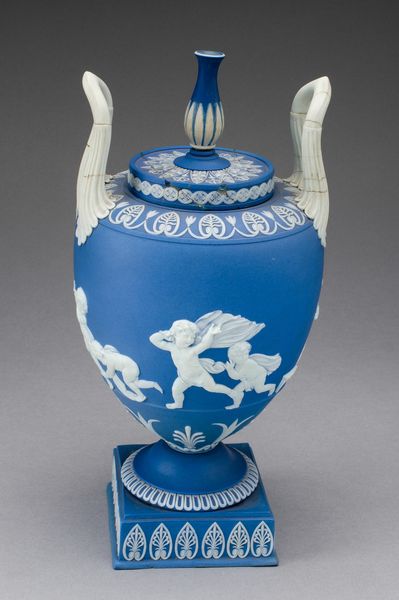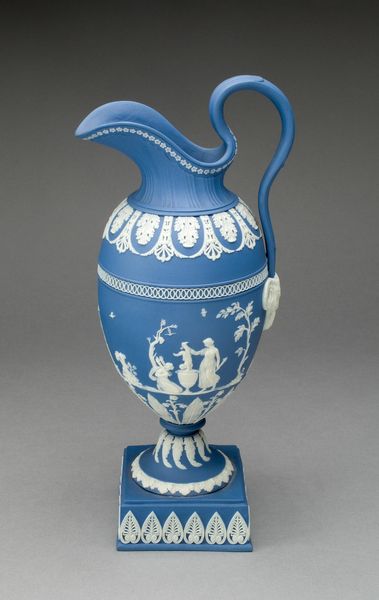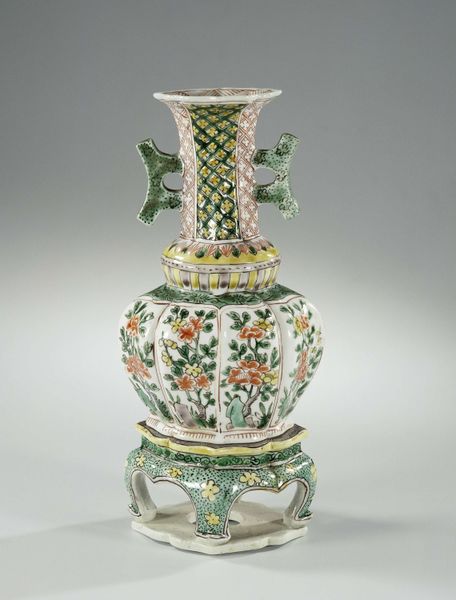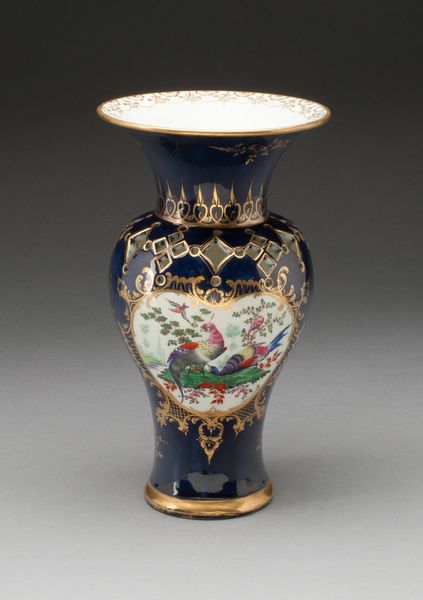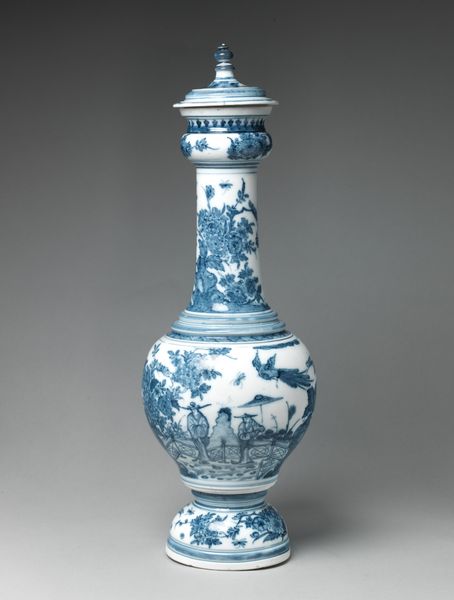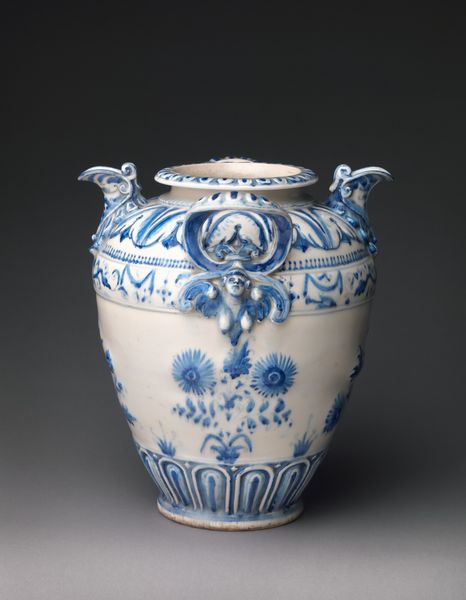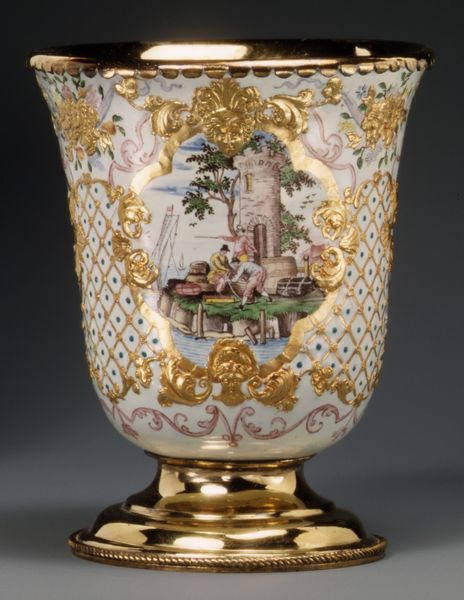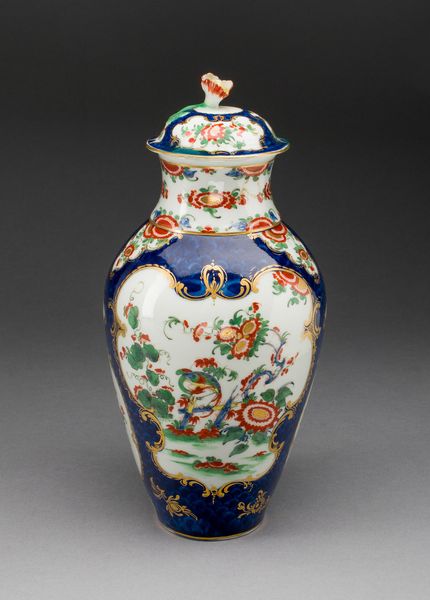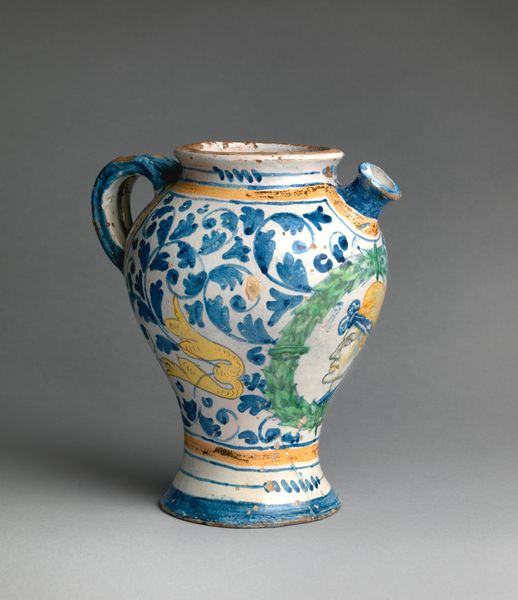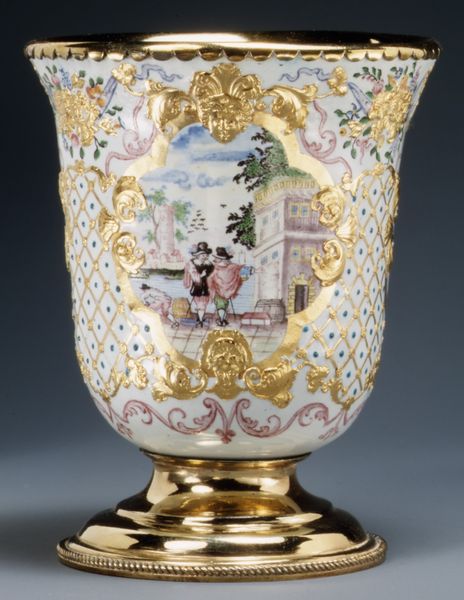
ceramic, sculpture
#
neoclacissism
#
ceramic
#
vase
#
sculpture
#
ceramic
#
erotic-art
Dimensions: H. 22.2 cm (8 3/4 in.); diam. 10 cm (3 15/16 in.)
Copyright: Public Domain
Editor: This ceramic vase, “Vase with Sacrifice to Hymen,” created around 1800 by the Wedgwood Manufactory, showcases intricate sculptural details. It strikes me as incredibly ornate, especially with the checkerboard pattern on the lid and base juxtaposed with the Neoclassical figures. What draws your eye in this piece? Curator: Certainly. Notice how the artist has divided the surface into distinct zones using color and pattern? The eye is forced to reconcile the flat, decorative checkerboard with the roundness of the vase. Consider the interplay between the ground, predominantly a soft lavender, and the superimposed figures executed in high relief. Editor: The figures seem almost detached from the lavender ground because of the relief. How does that separation function formally? Curator: The figures become more like objects themselves, complicating their role in representing a scene of 'Sacrifice to Hymen'. Ask yourself how the artist plays with depth here, contrasting flatness and depth, grounding and floating. It's as if the scene exists both on and outside the vase, challenging our spatial perception. Note too the calculated repetition of geometric forms across its surfaces versus organic figuration of the central frieze, and how each participates in a totality of the visual field. Editor: That makes me rethink the way I see it; it’s not just a decorative object, but a conscious manipulation of space and form. It's as if Wedgwood sought to question the boundary between representation and abstraction. Curator: Precisely. This object invites an unraveling of established oppositions between decoration and fine art through its surface treatment. These strategies result in conceptual play within a visual language of material and design. Editor: I see it much clearer now, focusing on its visual language helps one find a deeper appreciation.
Comments
No comments
Be the first to comment and join the conversation on the ultimate creative platform.
